Ornamental Grasses: The Basics and Beyond
Ornamental Grasses: The Basics and Beyond
Adding texture, color and movement to your gardens.
Grasses are a natural for Cape Cod landscapes. Be they short, medium or tall, they add so much to our yards and gardens. Since these perennial plants come into their own at this time of year, and then go on to take center stage in the fall, we thought it was a good time to give our customers some ideas for planting and tips for success.
Maybe you shouldn’t call them “beach grass.”
It’s common for many people to refer to all landscape grasses as “beach grass.” This can be confusing, especially when people come into the garden center and ask, “Do you have beach grass?” Since there is an actual native grass with the common name of beach grass (Ammophila breviligulata) that we don’t always stock, you might be told that we don’t have that plant! We almost always have a large assortment of ornamental grasses, however, so unless you want the short plant that grows on the dunes (photo below) call them ornamental grass or landscape grasses.
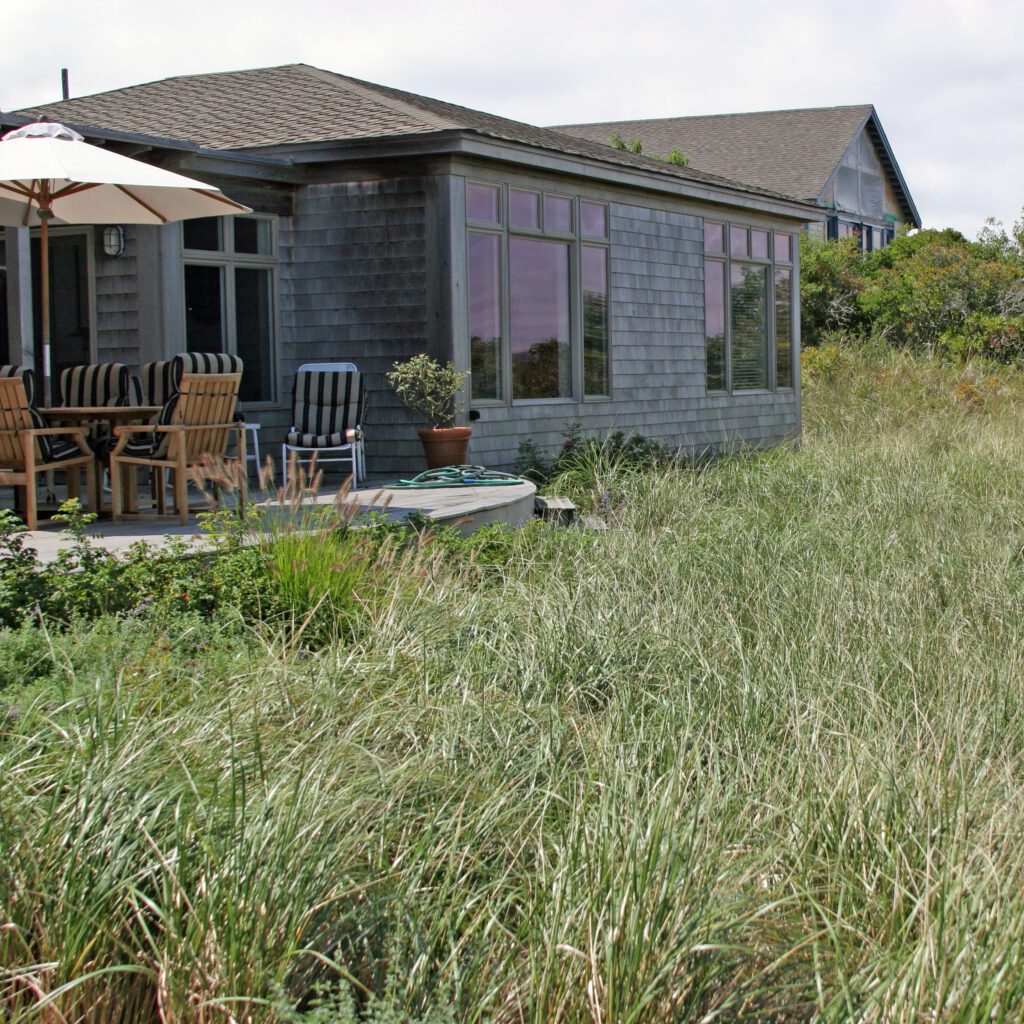
Choose the type of grass that fits in the space you have.
There are several ornamental grasses that are commonly planted on Cape Cod. One of the most common is Japanese silver grass, Miscanthus sinensis. Miscanthus comes in several varieties, from the green species to the striped zebra grass (M. sinensis ‘Zebrinus’) and various others that are variegated. There are some shorter versions such ‘Adagio’ and ‘Yaku Jima’ as well as the popular fine foliaged variety called ‘Morning Light.’ Although the various types will vary in height, most of them will grow to 6 feet in diameter or wider. The most common mistake that people make with Japanese silver grass is not allowing for that wide growth when they plant.
Another ornamental grass that’s frequently used on the Cape is fountain grass, Pennisetum alopecuroides. The fountain grasses also come in several varieties that grow various heights. The most common variety is ‘Hameln,’ which grows 2 to 3 feet tall and 4 to 5 feet wide. There are many shorter versions as well, so ask in our nursery if you need one that stays shorter.
Both of these grasses do best in full sun and well-drained soil. Unlike the native grasses such as beach and switch grass, these prefer regular watering when mother nature doesn’t deliver a weekly rain fall.
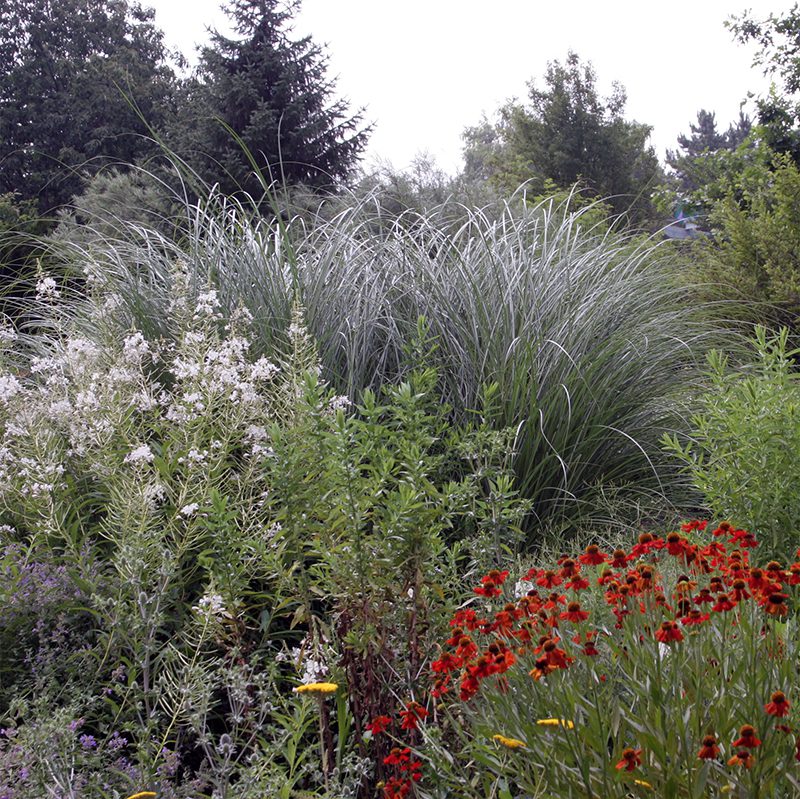
Consider the natives…
There are native grasses that are not only beautiful in the landscape, but are drought tolerant and wild-life supporting too. Birds are especially fond of the seeds of switch grass (Panicum virgatum, also called panic grass) and little bluestem (Schizachyrium scoparium). Switch grass generally grows about 4 feet tall, and will often self-seed a bit where it’s happy. It turns a golden color in the fall.
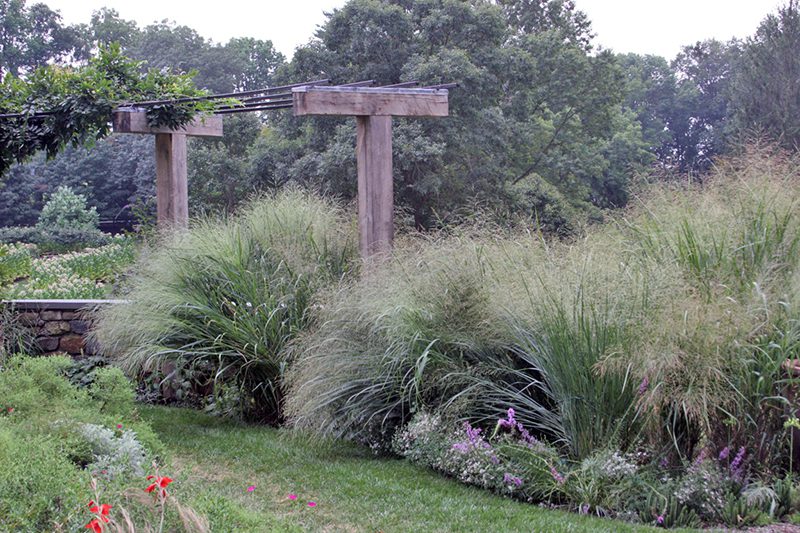
Little bluestem grows 18″ to 2 feet tall. You’ll often see this plant growing in sparse tufts in Cape fields and roadsides, but when it’s planted in groups its blueish color is an asset in the garden when planted with flowering perennials. Little bluestem turns a reddish color in the fall, and is especially beautiful when the first light snow falls around it.
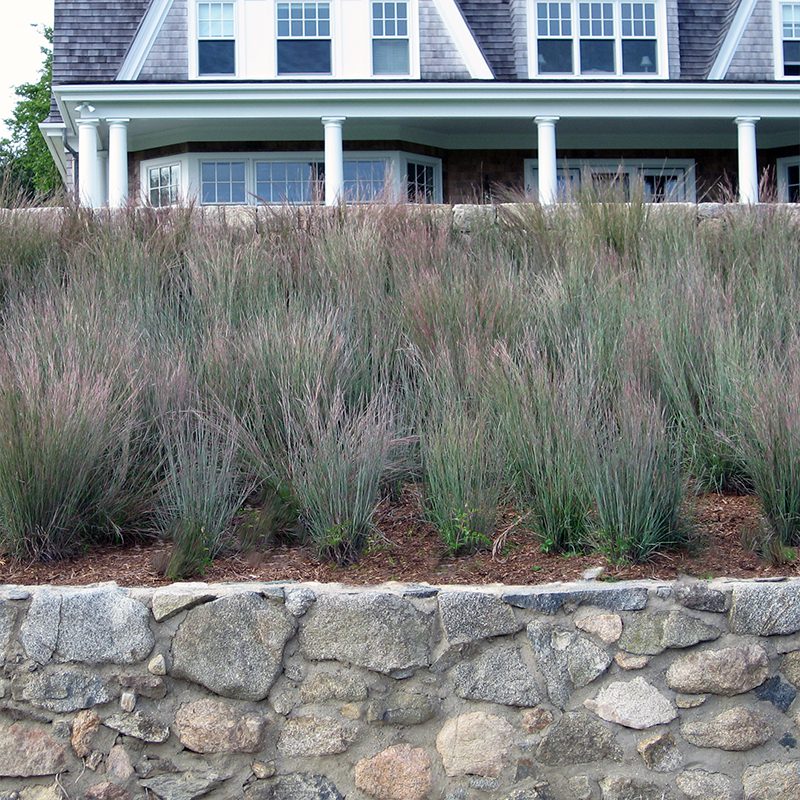
Fertilize grasses in the spring.
Grasses benefit from a fertilizer that’s got a higher percentage of nitrogen in it. Plant-tone is a good choice, and it can be applied in March, April or early May. Don’t fertilize these plants late in the summer, however. If you haven’t given them any fertilizer lately, wait until next spring.
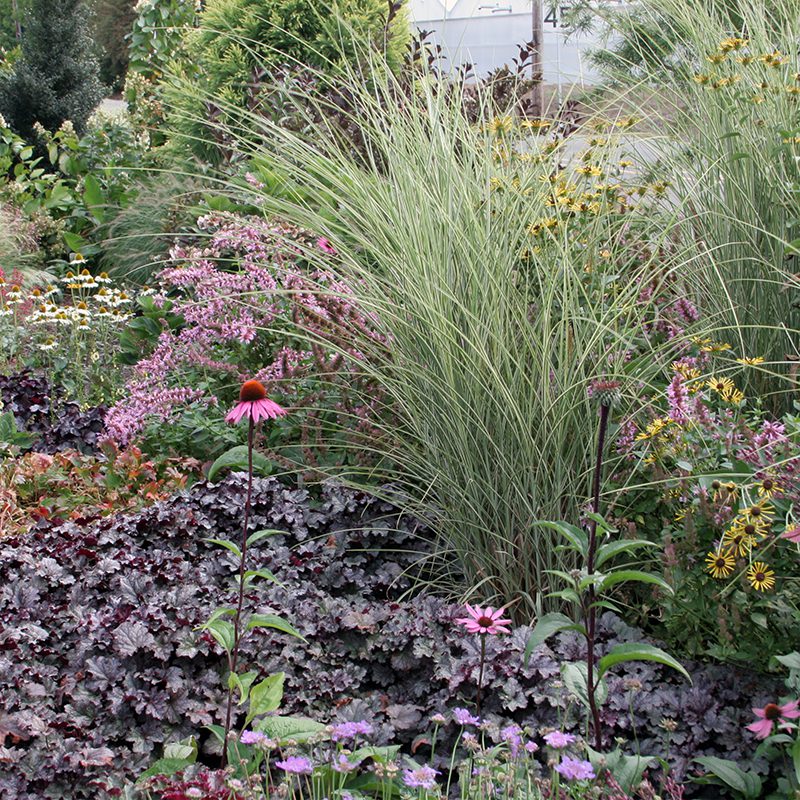
Got shade? Consider Japanese forest grass!
One of best low grasses for part-sun to shade gardens is Hakonechloa macra, commonly called hakon grass or Japanese forest grass. This plant is available with green blades, but many people prefer the butter yellow ‘Aureola’ or the bright yellow ‘All Gold.” The yellow varieties are especially striking when planted with blue-foliaged Hosta or purple leaf Heuchera. These grasses provide color in the landscape from April through October.
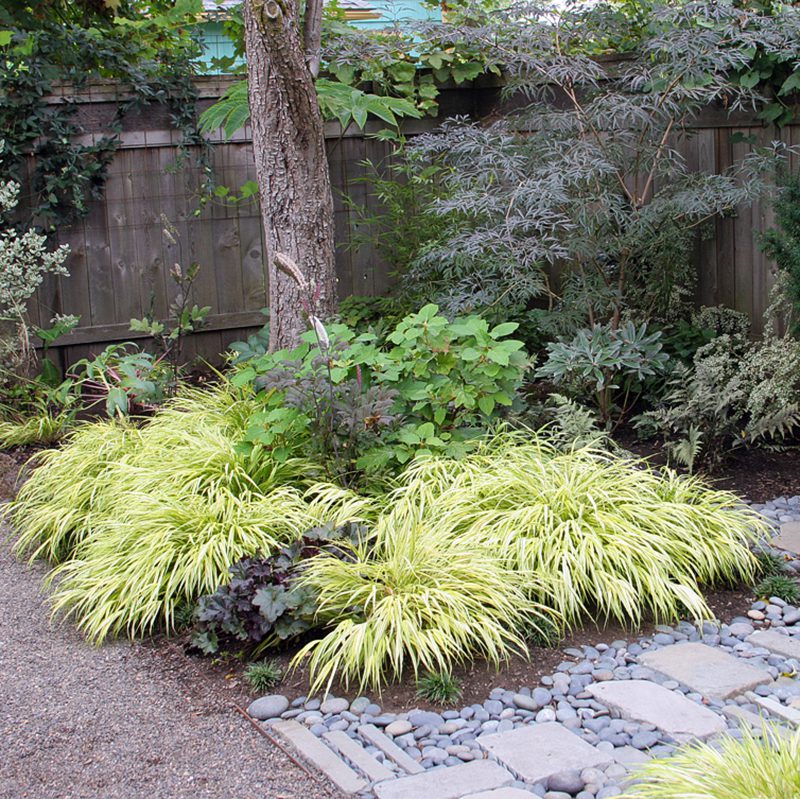
Don’t cut grasses down in the fall.
If you leave your grasses in place though December, you’ll not only enjoy their fall coloring, but they will be stronger plants as well. When they are cut down in the fall the clumps are more prone to crown-rot, which can cause the centers of the plants to die out. You can safely cut them back from January on, but make sure you do it before the first of April. If cut later in the spring, the new growth will be cut off too, and this makes a less attractive plant.
I can’t decide which ones to plant…
You don’t have to pick just one variety. Combining several grasses with shrubs and perennials can create a beautiful landscape. Come into the store and have our experienced staff help you choose an assortment and the companion plants that will look best with them.
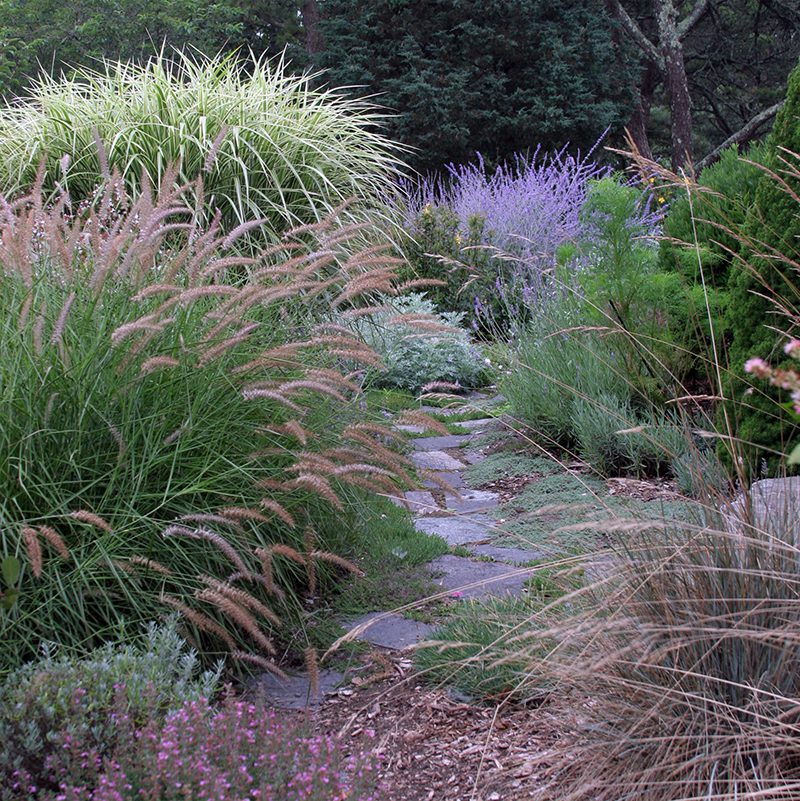
My grasses have gotten too big!
If your ornamental grasses have outgrown their location, the best thing to do is move them. They can either be dug and replanted as one clump, or dug and then divided into three or more pieces. Know that it’s easier to dig this before they get really wide…once a grass is six feet in diameter you might need a bobcat or other machine to take it out.
2 Comments
Leave a Comment
Subscribe To Our Newsletter
Sign up for our weekly email about sales and events.

Are their any ornamental grasses that change color each season
Most ornamental grasses turn golden in the fall. This includes things like the bluish Panicum called ‘Heavy Metal.’